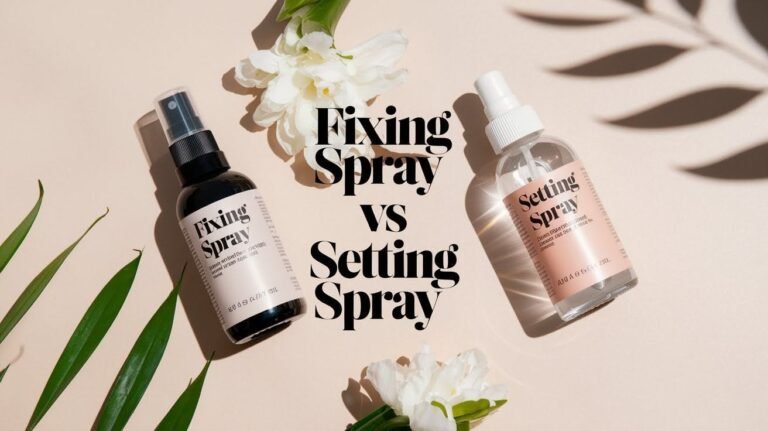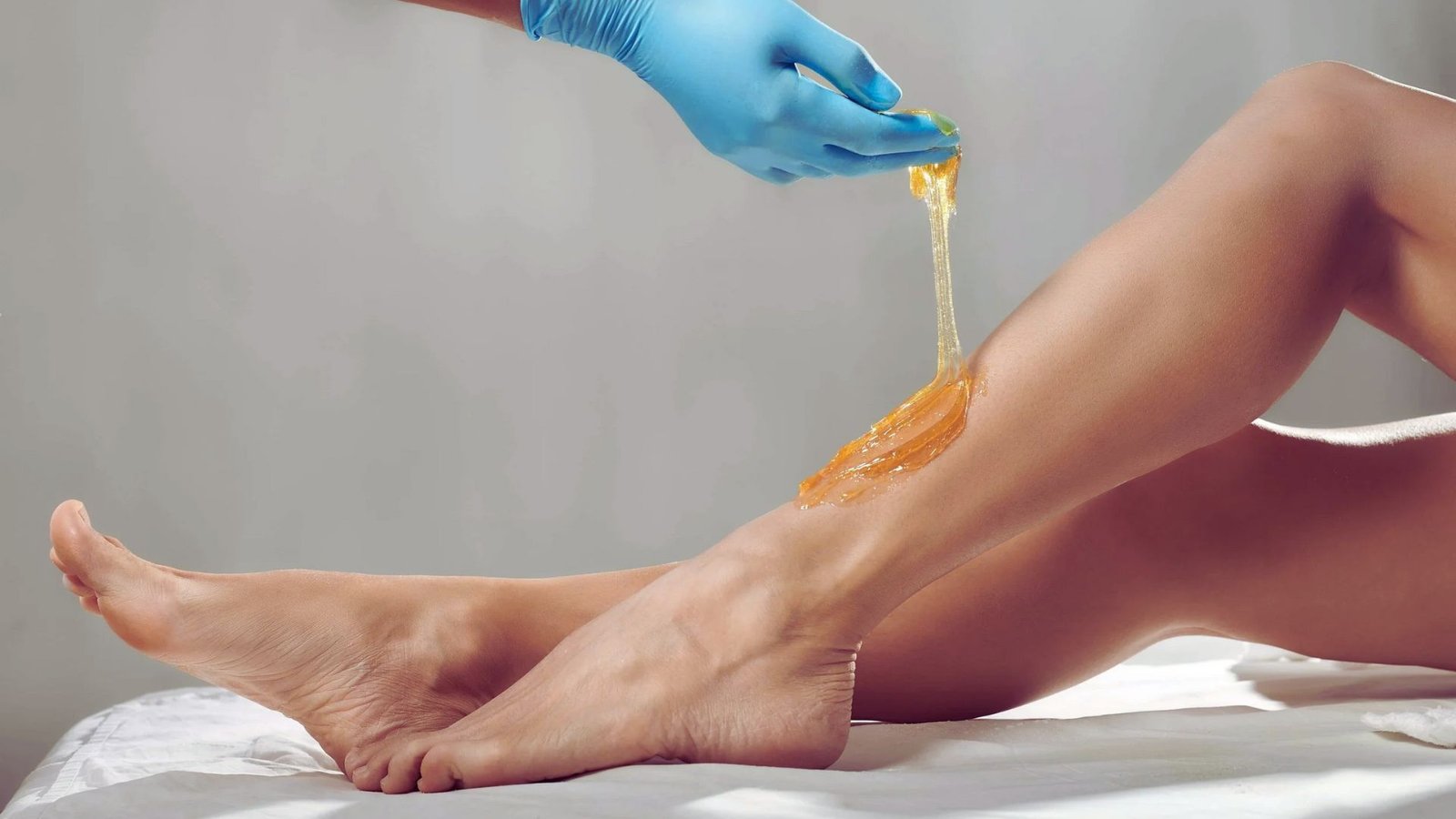Does Self Tanner Come Off in the Pool?
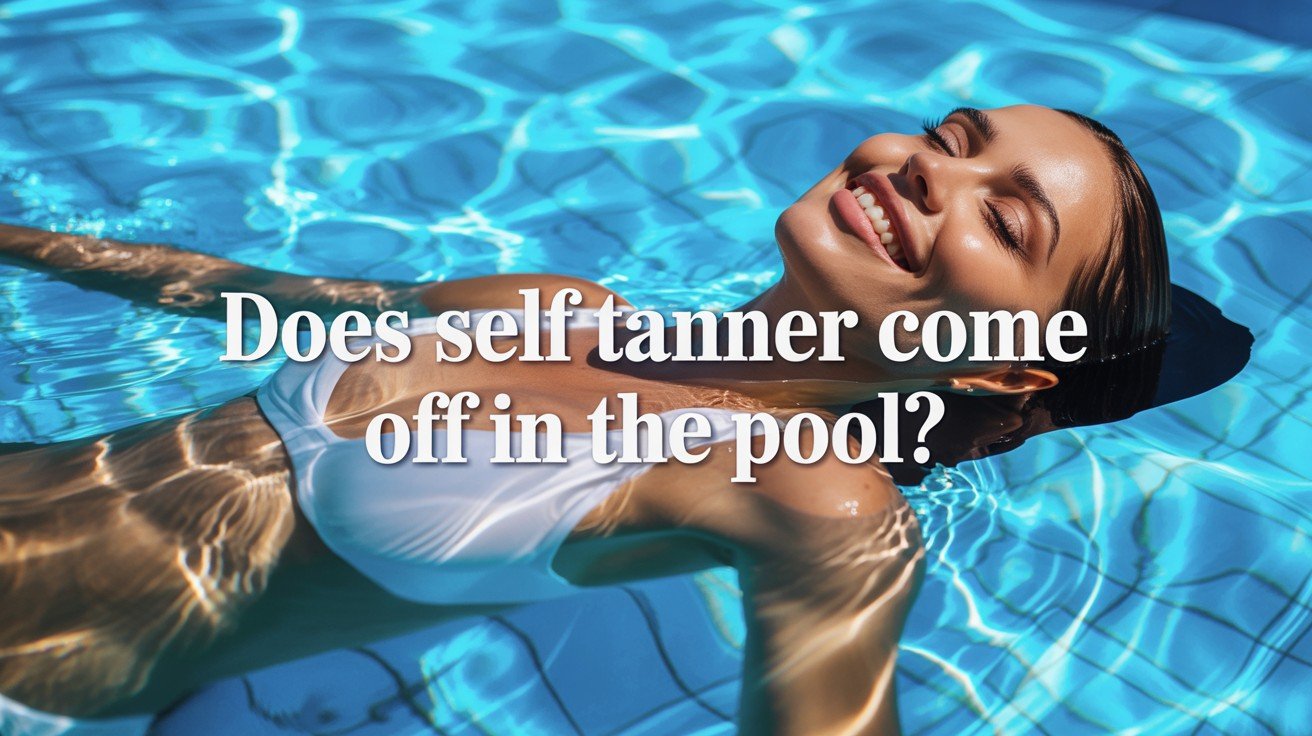
I get it. You waited a long time for your tan to set and now you’re asking yourself if self tanner will come out in the pool. The short answer is yes, swimming can affect your tan.
But don’t worry I’m going to explain exactly how self tanner works, why pool water affects it, and most importantly, I’m going to pass along my favorite tips for how to make your self tanner last through a day swimming in water.
Let’s start with finding out how self tanner works. You will learn some facts about chlorine, some tips for your hair before and after the pool, and what measures actually work to your favor when it comes to hair care.
Now someone can enjoy the pool and keep sun-kissed skin!
How Self Tanner Works
Self tanner creates color through a chemical reaction on your skin’s surface that lasts several days before naturally fading away.
What is DHA?
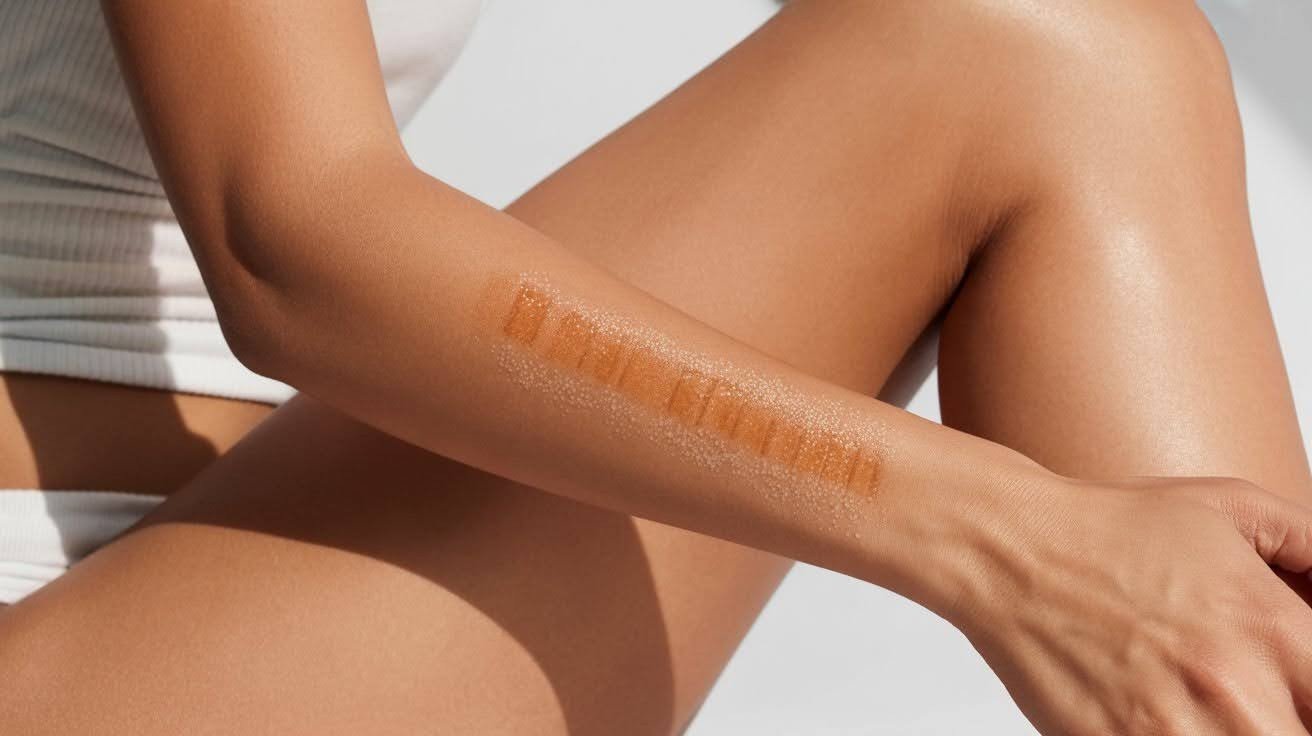
DHA stands for dihydroxyacetone. It’s the main ingredient in most self tanners.
When you apply self tanner, DHA reacts with amino acids in your dead skin cells. This creates brown pigments called melanoidins.
The reaction takes about 2 to 4 hours to develop fully.
Your “tan” is basically a temporary stain on your skin’s surface. It’s not a real tan from the sun. The color sits on top of your skin instead of being produced inside it.
This matters because anything that removes dead skin cells will also remove your self tan.
Which Skin Layer?
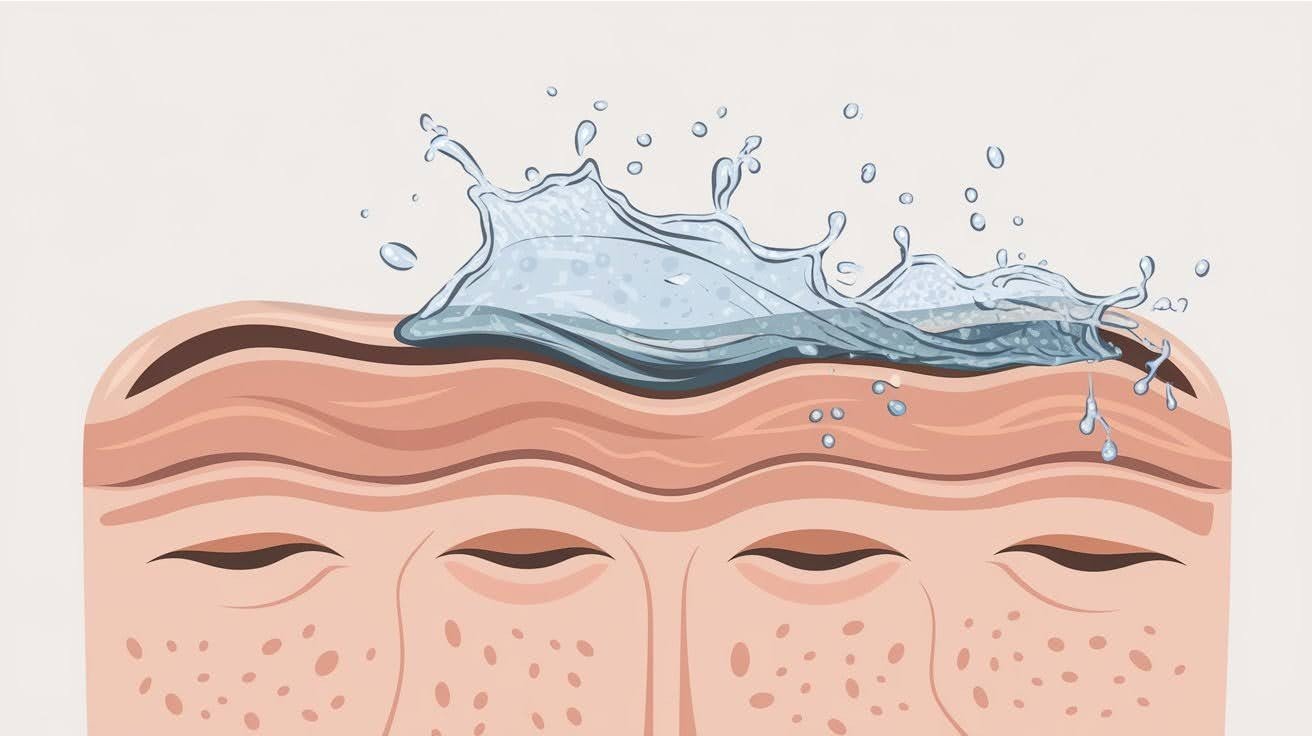
Self tanner only works on the epidermis. That’s the outermost layer of your skin.
Your body naturally sheds dead skin cells every day. As these cells fall off, they take your self tan with them.
This is why self-trans fade over time. Usually they last 5 to 7 days.
Water exposure speeds up this process. When skin gets wet repeatedly, it softens and exfoliates faster.
Understanding this helps explain why swimming affects your tan so much.
Why Swimming Can Affect Your Self Tan
Pool chemicals, salt water, and extended water exposure all work together to break down and fade your self tanner faster.
Chlorine in Pools
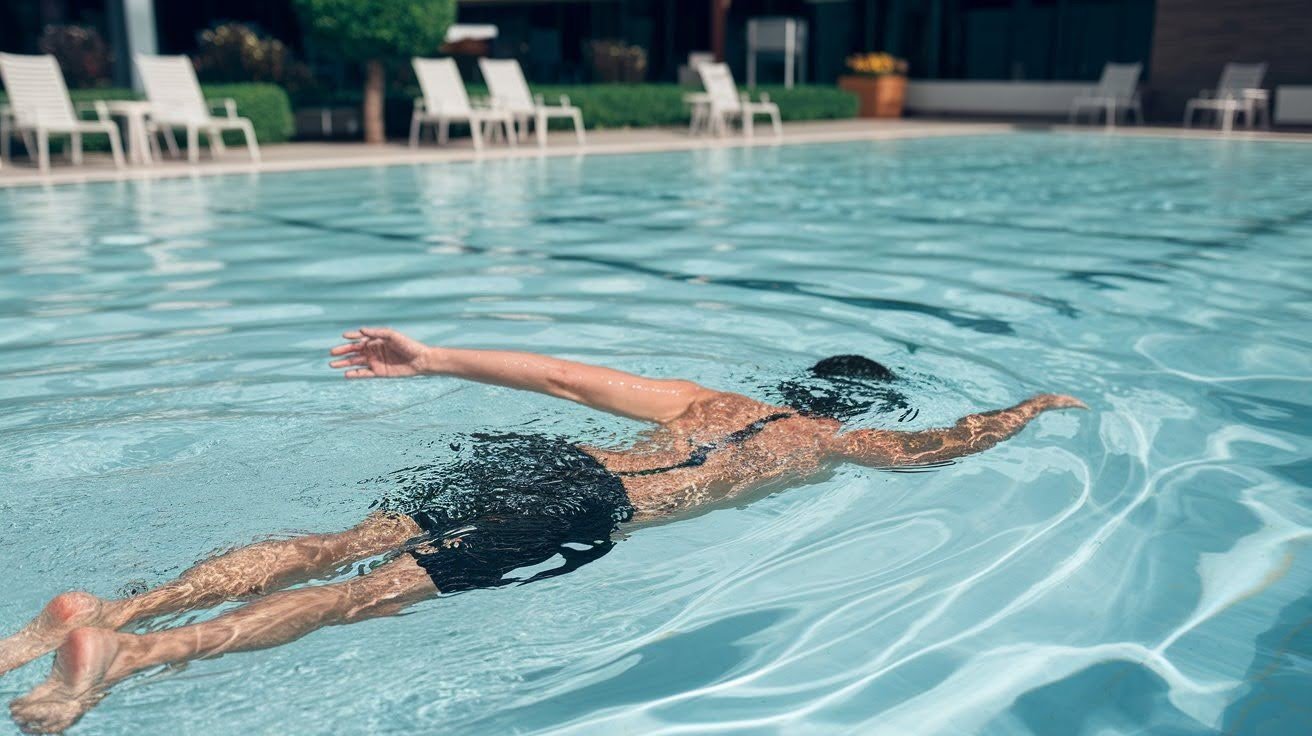
Pool chlorine is a strong chemical. It’s designed to kill bacteria and keep water clean.
Unfortunately, chlorine also breaks down DHA molecules on your skin. It speeds up the fading process significantly.
Even a quick swim in a chlorinated pool can lighten your tan by a shade or two. Long swimming sessions can strip away most of your color.
You’ll notice the fading most in areas that get the most water contact.
Salt and Fresh Water
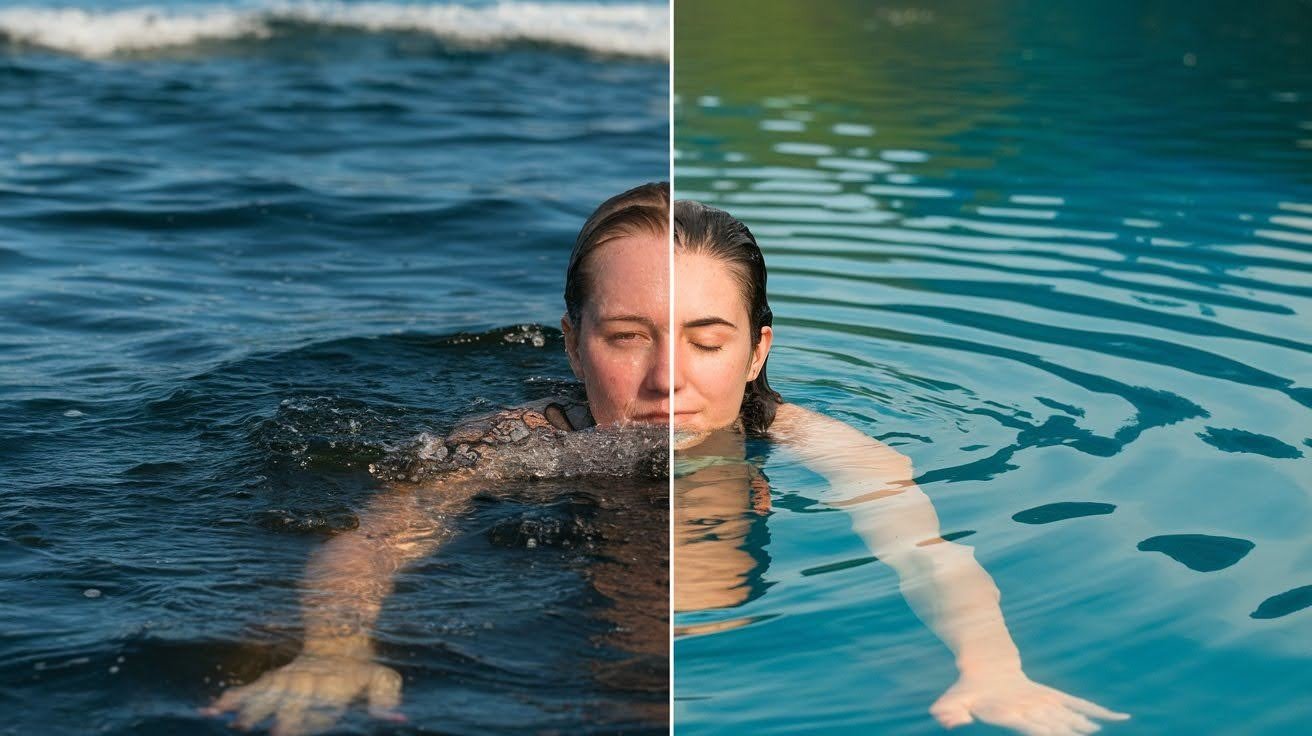
Salt water affects your tan differently than chlorine, but it’s still problematic.
Salt dries out your skin. Dry skin flakes off faster than moisturized skin.
When your skin exfoliates quickly, your tan goes with it. The drying effect of salt water accelerates this natural shedding.
Fresh water is gentler than both chlorine and salt water. But prolonged exposure still causes fading.
Any water softens your skin’s outer layer. The more time you spend in water, the more dead skin cells you’ll lose.
Hot Tubs and Chemicals
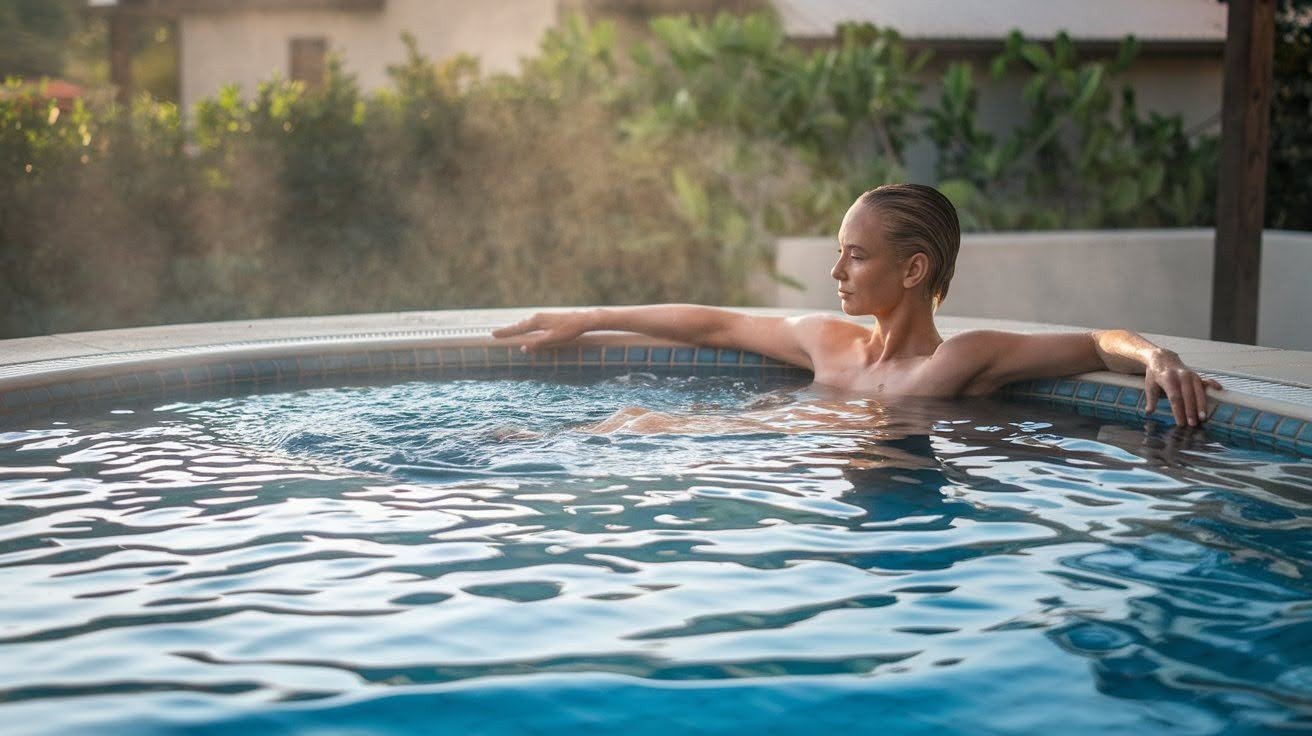
Hot tubs combine two tan-killing factors: heat and chemicals.
Hot water opens up your pores. This makes your skin more vulnerable to chemical effects.
Most hot tubs use chlorine or bromine. These chemicals penetrate your skin more easily when pores are open.
The combination means your tan fades even faster in a hot tub than in a regular pool.
I’d recommend avoiding hot tubs right after applying self tanner if you want maximum longevity.
How to Swim Without Losing Your Tan
With smart preparation and aftercare, you can minimize fading and keep your self tan looking good through the swimming season.
Pre-Swim Tips
- Start protecting your tan before you even touch the water.
- Apply water-resistant sunscreen over your self tan. This creates a protective barrier between your skin and pool chemicals. Choose SPF 30 or higher.
- Wait at least 24 hours after applying self tanner before swimming. This gives the DHA reaction time to fully develop and set.
- Consider using a gradual self-tanning lotion the night before swimming. These products have lower DHA concentrations. They’re perfect for touch-ups and maintenance.
- Some people apply a thin layer of coconut oil or body oil before swimming. This can help create an additional barrier.
During Swimming
How you swim matters as much as what you do before.
Prefer quick dips over long swimming sessions. The less time you spend in water, the less fading you’ll experience.
Try to minimize rubbing against pool surfaces. Pool walls, ladders, and lane lines can scrub off your tan.
If possible, rinse off in fresh water after being in a chlorinated pool. This removes some of the chlorine before it has time to work on your tan.
Don’t rub your skin while in the water.
Post-Swim Care
What you do after swimming is crucial for tan preservation.
Rinse off immediately after getting out of the pool. Use lukewarm fresh water to wash away chlorine or salt.
Pat yourself dry with a towel. Don’t rub vigorously. Rubbing creates friction that removes dead skin cells along with your tan.
Apply a rich moisturizer within 5 minutes of drying off. Hydrated skin holds onto self tan much better than dry skin.
Look for moisturizers with ingredients like hyaluronic acid or glycerin. These help lock moisture into your skin.
Reapply self tanner every 2 to 3 days if you’re swimming regularly.
Common Myths About Self Tanner and Swimming
Myth: Self tanner provides sun protection.
This is completely false. Self tanner only changes your skin color. It doesn’t protect you from UV rays at all.
You still need sunscreen every time you’re outside. Even with a dark self tan, you can get sunburned.
Myth: You can prevent all fading with the right products.
Unfortunately, no product will keep your tan perfect after swimming. Chlorine and water exposure will always cause some fading.
The goal is to minimize fading, not eliminate it completely. Consistent care and regular touch-ups are the real solution.
Myth: Expensive self tanners last longer in water.
Price doesn’t always equal performance. Some affordable self tanners work just as well as luxury brands.
What matters most is the DHA concentration and how you care for your skin before and after swimming.
Recommended Products
- Look for self tanners with 5% to 10% DHA if you want color that lasts. Higher concentrations develop darker and typically fade more slowly.
- Gradual self-tanning lotions are perfect for swimmers. These have lower DHA levels, usually 2% to 3%. You can apply them daily without building up too much color.
- They’re easy to use and great for touching up faded areas.
- Moisturizer is your best friend for extending tan life. Apply it twice daily, especially after swimming.
- Products with shea butter, vitamin E, or aloe vera work well. They keep your skin hydrated and slow down exfoliation.
- Water-resistant sunscreens are non-negotiable. Look for broad-spectrum protection that won’t break down in water.
- Some self tanners now include built-in moisturizers. These combination products can simplify your routine.
- I personally use a gradual tanner throughout summer and apply it every other night to maintain consistent color.
Conclusion
Swimming will fade your self tan, but you can definitely minimize the damage. I now know it is all about preparation.
Will self tanner come off in pool water? Yes, but with precautions, you can make your sunless tan last longer. I just do quick rinses, light pat dry and use my moisturizing lotion daily.
Never skip sunscreen! Share your favorite summer swimming self-tanner in the comments section below.
Try these tips the next time someone goes to the pool.
Frequently Asked Questions
How long do you have to wait before swimming?
Wait at least 8 hours before swimming, but 24 hours is better. This gives the DHA time to fully react with your skin and develop a complete color that’s more resistant to fading.
Does chlorine strip self tanner?
Chlorine won’t strip your tan off instantly, but it accelerates fading significantly. After one swim, you might lose one or two shades. Multiple swims will gradually remove most of your color over several days.
Can I reapply after swimming?
It’s best to wait a few hours after swimming before reapplying. Make sure your skin is completely dry and well-moisturized first. Applying to damp or chlorine-covered skin can cause streaking and uneven color development.
Does waterproof self tanner work?
No self tanner is truly waterproof. Some products are more water-resistant than others, but all self tanners will fade with swimming. Water-resistant formulas may slow fading slightly, but they won’t prevent it completely.
How often to reapply with daily swimming?
If you swim every day, plan to reapply self tanner every 2 to 3 days to maintain your color. Use a gradual self-tanning lotion for easier maintenance. This approach prevents buildup while keeping your tan looking fresh and natural.



